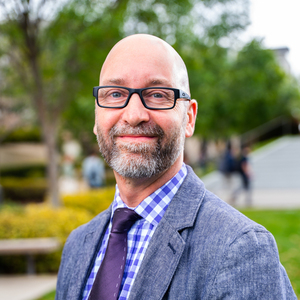This is Part One of a three part series. To read the other posts in this series, see Part Two and Part Three.
I teach my Theology II undergraduate survey course through the lens of a theology of food and hospitality. Over a few posts I’ll share a number of elements that constitute the overall logic of the class. First, here, I share the formal shape of the class and how I see it fitting with our key concerns as a university. I shall later comment on my textbook choices and other resources that explore the theme. Also to come will be an account of how I frame what the task of theology is for my students through this lens, along with the measure of what I think can be achieved in a class.
Theology II here at Biola covers the doctrines of salvation, the Holy Spirit, church and last things. I subtitle my class Theology and Food: Feasting and Fasting. My personalized course description reads as follows:
Given the richness of the material to be covered, the course will approach the doctrines from a particular angle in order to develop a practical theology of food and hospitality. This will serve as a tangible reminder of key learning outcomes to discern the holistic and embodied reality of the salvific bearing in of the Kingdom of God in our lives. This will be achieved as students demonstrate a measure of mastery of factual biblical knowledge in order to shape a principled Christian theology. To this end students will be encouraged throughout to “taste and see that the Lord is good,” not least in being required to memorize and recite Psalm 34 in groups, and practically exercising hospitality through sharing meals, prayer and fasting, a hospitality project, and a final feast.
As a result of completing this course, the student should be able to identify, evaluate and explain historical and contemporary theological and cultural differences between Christians. One form of this engagement will be in memorizing and reciting the Nicene Creed; another will be learning to discuss differences between our present forms of church life with their particular traditions with Biblical wisdom and patience through theological reasoning. Encouragement will be given to all voices with an emphasis on patient listening together towards an embracing welcome and lived reconciliation. This will chiefly occur in group discussions of assigned reading.
Successful completion of the course will require sustained effort in reading and writing with a view to tasting and seeing that the Lord is good. That is, the class is designed for spiritual formation. This tasting and seeing intends to encompass the widest sphere of the student’s discipleship, worship and involvement in mission. Prayer within small groups and individually outside of class time is required and opportunity for feedback is provided in prayer projects.
There are a number of broad concerns that I understand we have in our undergraduate curriculum. My hope is that the first paragraph of this description allows for elements of the integration of faith and learning. In turn, I intend the second paragraph to point to the importance and development of diversity and cross-cultural competence. The third paragraph then indicates how I seek to incorporate spiritual formation into the course.
Key verses are both Psalm 34:8 and Romans 14:17:
"Oh taste and see that the Lord is good! Blessed is the one who takes refuge in him!"
"For the kingdom of God is not a matter of eating or drinking but of righteousness and peace and joy in the Holy Spirit."
 ∫⁄›Æ ”∆µ
∫⁄›Æ ”∆µ
.jpg)


